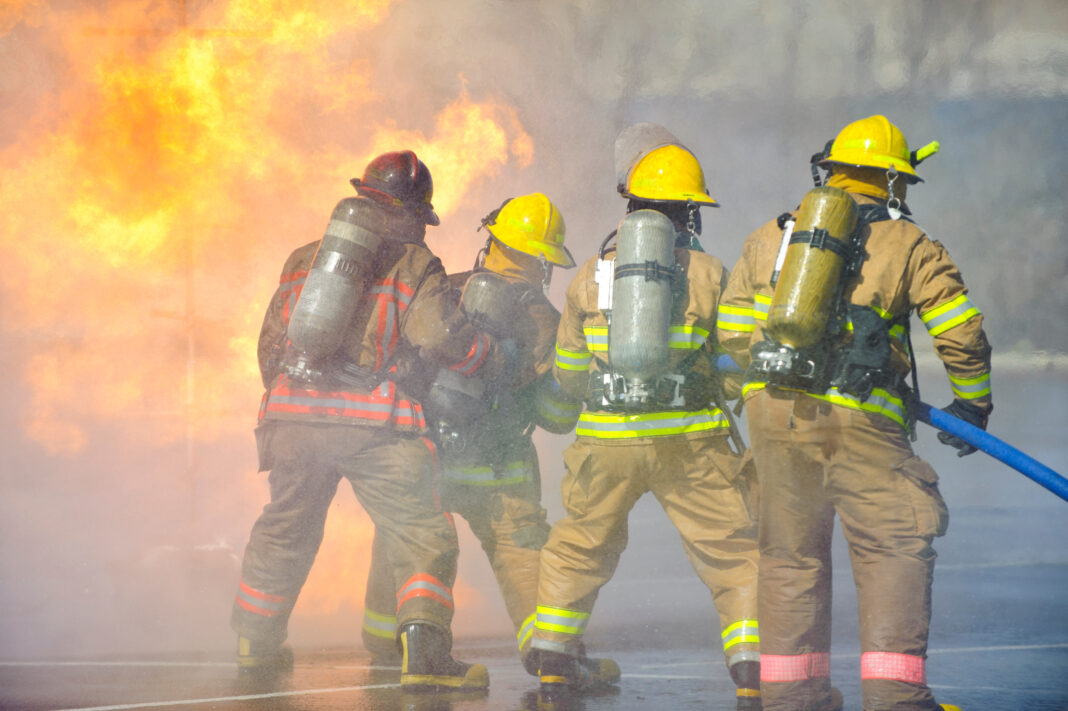In 1966, the US Navy Research Lab’s partnership with the 3M chemical corporation yielded the first formulation of aqueous film-forming foam (AFFF), sometimes referred to as ‘light water,’ a firefighting solution capable of quickly smothering petrol fuel fires. By the early 1970s, the foam’s efficiency made it a staple on military bases, civilian airports, and local firehouses throughout the US.
AFFF’s flame-suppressant properties resulted from the per/polyfluoroalkyl substances (PFAS) in its composition, a class of synthetic compounds commonly called ‘forever chemicals’ due to their strong molecular bonds preventing natural decay. The main subtypes used to manufacture the foam were PFOA and PFOS, the same compounds used in Teflon and Scotch Guard.
Despite AFFF manufacturers’ firm stance that PFOA and PFOS were inert ingredients, internal documents going back decades indicate that not only were the companies long aware of the compounds’ potential health hazards, they didn’t disclose this data to relevant authorities or consumers.
Over the past two decades, a growing body of medical and environmental research found that PFAS are resilient and mobile toxic contaminants, difficult to eliminate, and are highly bioaccumulative in bodily tissues and blood. The CDC has linked prolonged ‘forever chemical’ exposure to elevated cancer risks, thyroid and hormonal issues, affected kidney and liver function, higher cholesterol, preeclampsia, low birth weights, and deficient immune response to vaccines in children.
In 2016, the EPA elaborated non-regulatory health advisories that limited safe PFOA and PFOS concentrations in drinking water to 70 parts per trillion (ppt). However, the armed force’s decade-long AFFF use would result in PFAS being detected on the grounds of over 700 US military installations.
In the Yellowhammer State, PFAS contamination above the EPA’s 2016 guidelines was confirmed at Montgomery’s former Dannelly Field (1,490 ppt) and Maxwell-Gunther Air Force Base (122,000 ppt), Birmingham’s Sumpter Smith Air National Guard Base (45,230 ppt), and Daleville’s Fort Novosel (104,000 ppt).
During the heyday of AFFF use, the lacking knowledge surrounding its chemical constituents’ health risks meant that military firefighters didn’t employ adequate preventive measures to limit exposure. Aside from emergencies, the foam was also used during firefighter training, and decontamination didn’t go beyond hosing down turnout gear with water, which would even be haphazardly stored indoors or brought home. Moreover, military firefighters and the family members who accompanied them on contaminated bases may have been exposed to ‘forever chemicals’ in drinking water.
PFAS are only the latest in a long line of toxic occupational hazards that take a massive toll on firefighter’s health. According to a national study, US firefighters report higher cancer incidences and deaths than the general population. In July 2022, the International Agency for Cancer Research upgraded firefighting’s rating to a Group 1 profession, indicating high carcinogenic risks.
The adoption of the bipartisan PACT Act in August 2022 heralded long-awaited reforms to help veterans struggling with the lasting consequences of toxic exposures incurred during service. And yet, despite recognizing PFAS’ potential health hazards, the VA doesn’t consider former firefighters’ exposure to AFFF as a presumptive service-related factor that would qualify them for disability benefits or compensation.
Veteran firefighters seeking VA assistance for PFAS-related conditions resulting from AFFF exposure must prove their disease’s service connection. However, this isn’t an easy task, as service records going back decades may be hard to get a hold of, and the current medical proof of PFAS’ causal links isn’t considered strong enough (yet) to be reflected in most diagnoses.
As a result of the bureaucratic difficulties they frequently encounter, former service members have to face the prospect that VA assistance may not be granted in time or at all. For veteran firefighters like Michael Lecik, who was diagnosed with multiple myeloma in 2019, having his disability claim repeatedly denied by the VA meant that he couldn’t afford the high treatment costs and would pass away two years later at the age of 41.
Before Mr. Lecik’s death, a legislative proposal bearing his name was brought forth to the House of Representatives, seeking to recognize veteran firefighters’ cancers as presumptive service-connected conditions. However, despite being introduced for a second time in 2021, the proposal never went further than the congressional subcommittee to which it was referred.
In light of the success that bills such as the PACT Act and the Federal Firefighters Fairness Act garnered in the previous congressional session, the Michael Lecik Military Firefighters Protection Act was resubmitted for a third time in June 2023. Similarly, the VETS PFAS Act proposal was recently reintroduced for the fourth time since 2018.
Encouragingly, the greater awareness surrounding forever chemicals’ enduring risks has prompted significant regulatory actions. The Department of Defense will phase out toxic AFFF by October 2024 and has adopted new requirements for fluorine-free foams going forward. Meanwhile, the EPA proposed the first national standards for PFOA and PFOS in drinking water (4 ppt, individually or combined) as it ramps up its efforts to finally regulate PFAS as hazardous substances under CERCLA.
About the Author
Miguel Leyva is a case manager with the San Diego-based paralegals at Atraxia Law, helping individuals harmed by hazardous substances gather and organize the records and documentation required to support their toxic exposure claims.

















